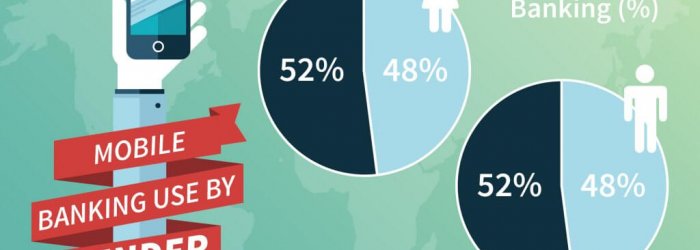
In a digital age, bricks-and-mortar branches still matter for banking customers
From getting in the weekly groceries to ordering a Saturday night takeaway, enjoying our downtime to starting a business and everything in between, the increasing accessibility of high-powered broadband and affordable, Internet-ready devices has seen a huge shift in the way we deal with both life's luxuries, and its necessities.
The change is so vast, that a Global Web Index report announced that as many of 90% of all global transactions involve the web at some point in the customer's purchasing journey.
When it comes to managing our money, things are certainly no different. Online banking has evolved from the primitive services offered to an exclusive few way back into the 1980s, to a staple of many people's daily lives.
As banking institutions invest more in innovative financial software to connect with their customers and provide their own mobile apps to help customers check balances, transfer funds and make payments on the move, we've never had more opportunity to stay on top of our finances wherever we are, whenever we choose.
So does the ongoing rise of mobile banking mean traditional bricks-and-mortar branches are in danger of becoming obsolete? Not if recent evidence is anything to go by.
Local services
In September 2014, British chain TSB announced plans to launch 30 new physical branches across the United Kingdom. The news comes as part of the organisation's move to rebrand itself as a provider of 'local banking for Britain.'
In a highly competitive market, this is certainly a smart move.
A Financial Services Consumer Insight Survey conducted in 2013 found that having a physical branch nearby was a primary factor in over 60% of British customer's choice of bank.
Despite the wealth of online options available to them, it seems that consumers still enjoy the convenience and peace of mind that comes from having a branch nearby, and TSB are taking further measures to expand their local offer. The new branches will see opening hours set to benefit the local community, whilst the brand are also going the opposite route of most of their rivals by providing local phone numbers instead of one central customer contact line.
TSB's efforts appear to be yielding results. In the summer of 2014, the bank revealed that it was responsible for over 9% of new and switching current accounts, 3% more than their original target.
Combining the old with the new
Of course, banking in person doesn't have to mean using outdated systems and technologies. In many cases, companies are combining their commitment to their physical locations with a commitment to introducing better, faster ways of helping customers get what they need from their local branches.
Before long, a visit to your bank will likely mean less queues and quicker services powered by digital user-interfaces, ideal for those such as the elderly who may not be hooked up to the web at home.
Yet even a move to in store, electronic banking isn't a sure fire way to keep customers happy.
Human interaction
Let's face it, as powerful as computers have become, they still haven't found a way to provide personal interaction with another human being.
There are times when the fairly rigid responses offered by digital systems don't quite cut it, especially when dealing with a complex situation or when trying to explore our options when selecting a new banking service.
Indeed, it seems that the human touch is still highly regarded by consumers. In a May 2014 study by Internet company NICE, face-to-face interactions came second behind only speaking to a live rep by telephone as the most satisfying channel for communications.
In the same reports, physically visiting a business' location was deemed equally as successful (69%) as the phone.
By comparison, usually popular online methods such as email and mobile apps were classed as the most satisfying by only 9% and 6% of participants respectively.
To that end then, having real human beings in real locations that customers visit will continue to play a vital role in the success of both banks, and businesses in general, for a long time to come.















